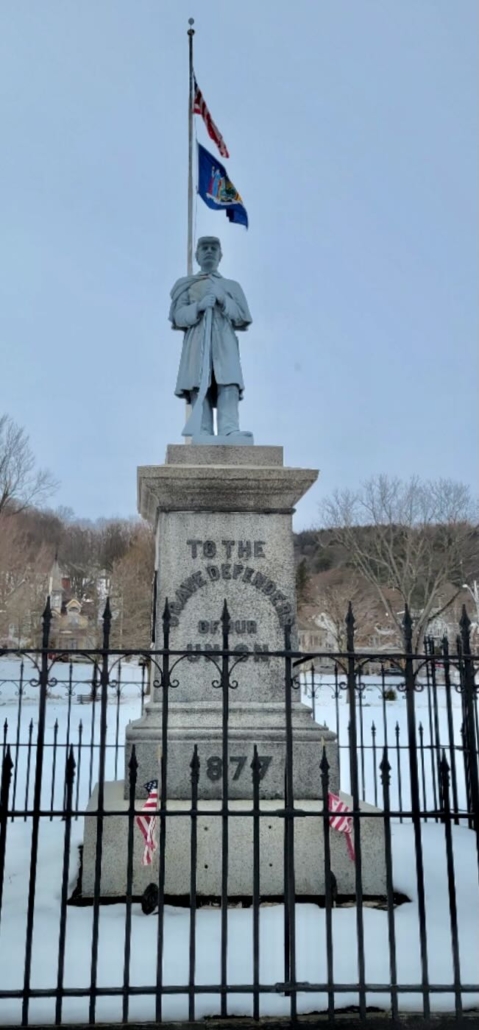Civil War Soldier
Written and narrated by Matt Zink, Cooperstown Museum Studies Graduate Program, SUNY Oneonta, Researched in 2023.
The Brave Defenders monument has stood proudly here since 1877, serving as a reminder of the loyal citizens of Little Falls who waged war against the Confederacy.
 At the outbreak of the Civil War in April of 1861, President Abraham Lincoln issued a call for soldiers from loyal states. The response, wrote one Senator, was “perhaps the most remarkable uprising of a great people in the history of mankind.” Only days after Lincoln’s proclamation, the Herkimer County Journal joined publications across the country in issuing a call for volunteers. In all, five hundred and thirty-five men from Little Falls answered the call and left their families and livelihoods behind to take up arms against the rebellion. Seventy of these brave defenders of the Union would perish in the war.
At the outbreak of the Civil War in April of 1861, President Abraham Lincoln issued a call for soldiers from loyal states. The response, wrote one Senator, was “perhaps the most remarkable uprising of a great people in the history of mankind.” Only days after Lincoln’s proclamation, the Herkimer County Journal joined publications across the country in issuing a call for volunteers. In all, five hundred and thirty-five men from Little Falls answered the call and left their families and livelihoods behind to take up arms against the rebellion. Seventy of these brave defenders of the Union would perish in the war.
Cities and towns across the country sought to memorialize their fallen husbands, brothers, and sons, and Little Falls was no exception. In 1877, The Galpin Post #19 of the New York posts in the Grand Army of the Republic raised funds to erect the monument’s granite base. Six years later in 1882, enough funds were raised to complete the monument by adding a zinc statue of a Union soldier atop it. The finished monument was formally dedicated on Memorial Day of 1882, and a jubilant crowd of celebrants from across the county gathered here in Eastern Park for the occasion.
Many statues of Civil War soldiers were created during this period.
They often looked similar in design but differed in subtle ways. For example, another depiction of a soldier might have one hand resting on-top of the rifle barrel. This statue is made of zinc, which was marketed as “white-bronze” to add to its appeal. It was produced by the Monumental Bronze Company of Bridgeport, Connecticut, and can be identified by the soldier’s hands, both of which firmly grasp the barrel of his weapon. Eighty-six of these statues stand tall across the country, and the one here in Little Falls holds claim to being one of the earliest ever produced – a discovery made by a Smithsonian researcher passing through Little Falls in 2001.



